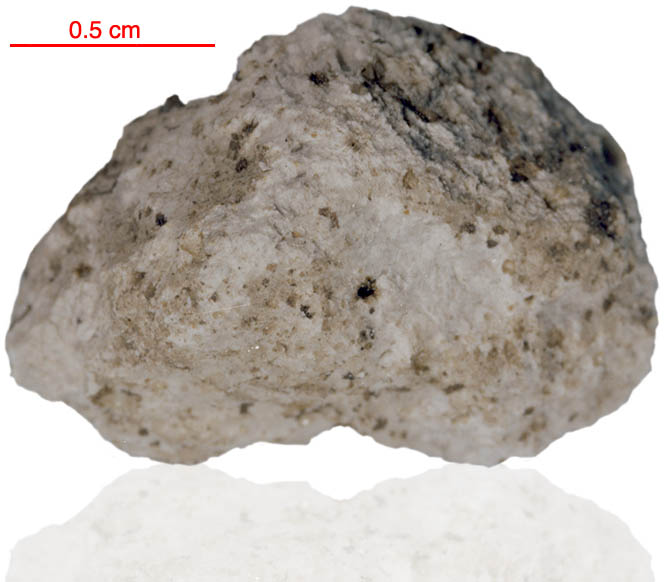
Fact sheet
60515 through to 60519 are small rake samples from the lunar module site at Apollo 16. They all look alike, but could be different samples, because the surfaces are mostly coated with micrometeorite craters. All are cataclastic anorthosite – of the ferroan variety. They contain about 98% plagioclase (An97) and 1-2 % pyroxene. Rotation 1 shows a plagioclase feldspar clast containing shock deformation features. Rotation 2 shows a small pyroxene crystal amongst fragmented plagioclase.
The sample weighed 1.2 grams before analysis and has not been dated.
Further details of this and other Apollo samples are here: http://curator.jsc.nasa.gov/lunar/
The rounded marks and some linear features are artefacts introduced during the thin section making process.
The Apollo 16 landing site was in the hilly region around Descartes crater in the lunar highlands. The landing spot was chosen to allow the astronauts to gather geologically older lunar material (Descartes Formation and the Cayley Formation) than the samples obtained in the first four landings, which were in or near lunar maria.
The mission lasted 11.1 days, with a stay on the lunar surface of 71 hours. The crew were on the lunar surface for 20.2 hours during which they traversed approximately 27 kilometers and collected approximately 96 kilograms of samples.
Apollo 16 was launched on 16 April 1972.






